Six months have passed since the last article and as always, time flew away. And as expected there were a plethora of changes and new milestones in child development. From even stronger self-awareness, huge jumps in cognitive functioning to fluctuations in eating habits and emotional regulations. So let’s explore what to expect in the first 6 months after the third birthday.
Article Contents
1. Let’s Move!2. The wonderful world of imagination
3. To eat or not to eat
4. I want to do it my way!
5. No, I’m not big already
6. Ultralearning
This article is about the first six months after the third birthday. If you are more interested in what to expect from a child in time from birth to the third year, we got it all covered in the first year of a child’s life, and the second year of the child life category section. So if you have a younger child, you can find what to expect in these categories.
Let’s Move!
There was, of course, always a need to move, but after the third year, it went to the next level.
It’s not just a need for regular walking, but running, jumping, flipping, climbing, hanging… you name it!
The positive side of this is that our little one is not into carrying that much anymore. Now she wants to walk (or run) much more. But the negative side is that sometimes it’s hard to control that urge before going outside. As you might imagine, the neighbors who live below us are probably not that thrilled with all that physical activity happening above them.
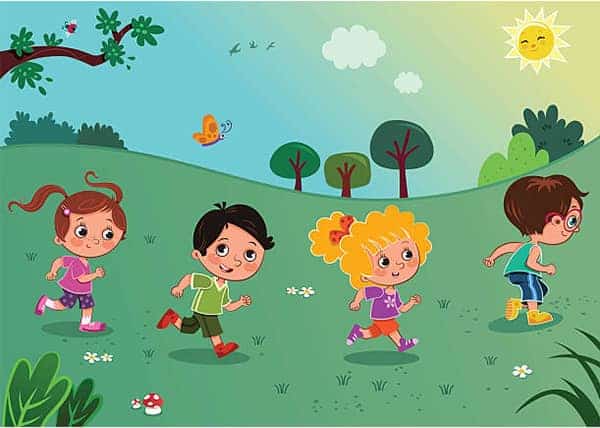
What we found as a good solution, if you live in a building as we do, is to use some kind of gym mat. It is great for jumping and monkeying around but keeps children safe and it is quiet for neighbors below.
Increased physical activity is expected at this age as children are still very curious and they want to explore everything around them. That also includes exploring the capabilities and limits of their body.
They might ask themselves: Can I climb this high rope? What if I turn backward on this crossbar? Can I jump over this hole? And of course, they won’t just stop asking these questions, they will try to test and find out.
And this can be challenging for us parents. On the one hand, we want our children to be active but we also want them to be safe. And often, it seems their physical activity is not that safe. This can lead to us being too restrictive, and not allowing the children to do many things.
Not only can this lead to emotional outbursts in children, but it can also have negative consequences long term. Yes, they will probably get some bumps, scratches, and cuts, but they will also become more nimble and that will help them avoid more serious injuries in the future.
Just have in mind that often, these activities look more frightening to us, observing parents, than they are actually dangerous. Yes, try to protect your child but not by denying the experience but by being close and by being prepared to help the child if the help is needed. Our instinct can be to throw remarks like “Be careful!” or “Watch out!”, yet that is unhelpful and can even make them lose much-needed focus on activity. It’s best to just observe, without many comments. If we really feel we need to intervene, we can say specific things, like “Hold with both hands!” or “Find footing before you let go of your hands.”
There is a saying that says: “Broken bone heals in a couple of weeks, but broken self-esteem takes much longer”.
Even if we need to support children in their need for high physical activity, we also need to teach them to manage their impulses so they learn that there is a time and place for everything. Also, sometimes too much excitement can lead to an increased risk of injury and we need to recognize these situations and get the children to calm their bodies.
One good idea in teaching the child to regulate behaviors is to have a calm time or special time when everyone is doing some calm activity. The length of that time should be adjusted to your child’s age. So for example, we can expect a child close to 3 years of age to be calm for 15-30 minutes while older children will be able to focus on some calm activity longer.
Another good thing, when you notice the child is too excited, is to engage in some calm activity with the child. Reading the book, telling a story, drawing, are all examples of activities that can help in calming our body. Also, practicing deep breathing and speaking slowly, with a deeper, quieter voice is helpful in calming us down.
The wonderful world of imagination
“I’m a robot fixing things! Now I’m a snake that will tickle you with her tongue. Now I’m a doctor that will give you medicine…”. These are just some of the examples of rich imagination and roleplaying that emerge after the third year.
We already talked about imagination and symbolic play in the article about children in the first 3 months of the second year. But now, one year later, we can talk about a whole new level of imagination and elaborate play.
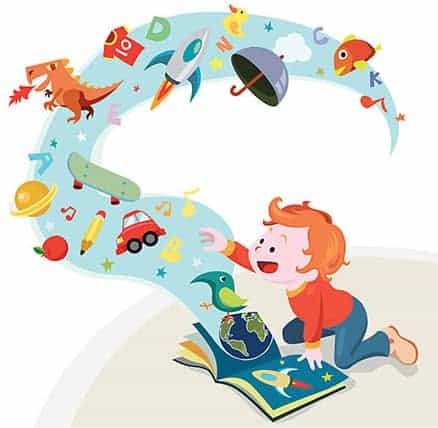
After three years of age, children tend to expand more on their play sessions and add much more details and elements to scenarios. Now, they already describe who they are, who the other characters in the play are, what the problem is, and what we will do about it.
One great thing about this period is that we can use play as a method to explore a child’s thoughts and emotions. In psychology, that is called the projective technique. We are projecting our own feelings, wishes, and thoughts on other people/things. That is why this is the number one method in working with preschool children.
For example, if you ask a child something like: “How did you feel when I didn’t allow you to eat that chocolate?”, the child will probably say “Ok”, “Not good”, or won’t say anything at all. But if we roleplay using imagination we can recreate the scenario: “I am the father crocodile who said to the baby crocodile: You can’t eat that chocolate right now!”. Then ask the child “What will the baby crocodile answer? How is it feeling?” – Here, you are more likely to get the answer that the child actually feels but through the eyes of the baby crocodile.
What we like to do is reverse roles. We take the role of a child and our little one takes the role of a mom or dad. Then we simulate some of her behaviors and she is responding to them as a parent. This is a great way to see how she perceives us and what she thinks about the reasons for things she is not allowed to do (for example, jumping on the stairs).
It’s important to note that roleplay is still their play and that means that we shouldn’t correct or shame our children in any way. Even if they roleplay us and say something that we wouldn’t or something incorrect – stay in your current role. Don’t jump out to lecture. Sometimes it is not even related to you, but some other concept your child is exploring. Use roleplay as an amazing peek into your child’s inner world, but don’t abuse it.
In general, adult roles should be minimized, think side actors instead of leads. No divas here. We follow implicit, and sometimes very explicit directions from our creative director. Leave your agendas out most of the time and just enjoy the moment.
To eat or not to eat
Well, this was a pretty confusing period considering food and eating… There were huge changes, almost on a week to week basis in the amount of food our little one was eating. There were weeks when she was barely eating anything throughout the day. We even though she may be sick. Not even her favorite food was motivating her enough to take more than a couple of bites.
On the other hand, there were periods when she was constantly hungry. Her plate was licked clean (literally) and she was asking for more. Hour after the launch she was hungry again. And after every meal, she was asking for a little bit more food.
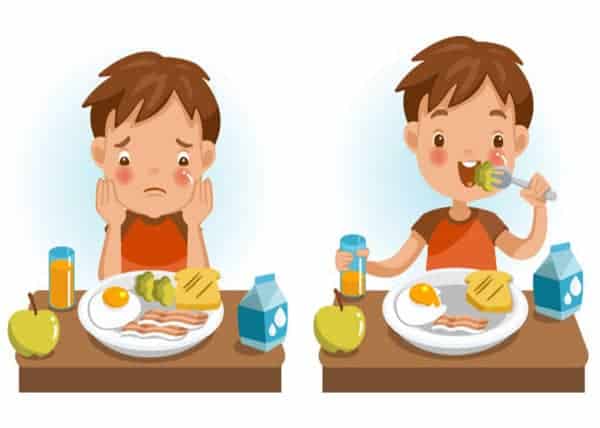
The thing is, these jumps and drastic changes are nothing unusual in a fast-growing three-year-old child. Children have excellent mechanisms of recognizing how much food they need. So as long as we are not interfering too much, and we know there are no other factors in play like sickness, they will take the amount of food they need.
Now about that interfering. We parents really like to interfere, especially when food is in question. We think we know better if children are hungry or if they have enough. But that couldn’t be further from the truth.
The most important is to offer a balanced diet to the child and let it eat as much as it needs. That means we should offer them all the required nutritive values their body needs. And that is usually achieved through a regular balanced diet. Fruit, vegetables, meat, grains, etc., any food we usually eat.
That means, we shouldn’t give a child, for example, a ton of chocolate or junk food, just because “he didn’t eat for launch, at least he will eat something”. This could have long-term negative consequences since usually, the food they can eat the most (sweets, processed food) is not nutritious and healthy.
Like all of us, children eat when they are hungry. Even if the food on offer is not our favorite when hunger comes, even that “blah” food will taste excellent. So to conclude, balanced food and let children decide how much they want to eat.
I want to do it my way!
As the children grow, their need for autonomy, independence, and control of their own environment is becoming stronger. There are certain ages when this is really prominent. When the child enters toddlerhood is probably the first of those big episodes. And we already wrote about our experiences in the article about baby in 19 and 20 months of age.
Around 3 years of age, it comes again, but a bit differently. It’s not just about doing things by themselves, their whole being wants to be free and autonomous in some ways. They assert themselves as somebody unique, different from mum or dad.
Sometimes their need for autonomy clashes with our need for order or control or even the idea of how we need to provide care for our child.
The first reason is maybe the simplest and easiest to overcome. Need for order. You want things in their place, less mess, less clutter. Children probably don’t care much about it and they contribute a lot to that mess. There could be lots of power struggles around cleaning. And that is a fight you never win, so don’t even start. Solutions that work for us are sort of minimalism, toys rotation, and helping with cleanup. Our child is expected to contribute to cleanup, but we are there to support. Having a cleanup song helps!
This need can also make you wary of letting children do things alone, like dressing themselves, preparing food, and eating alone. It will probably just create an additional mess and be slower than if you do it yourself.
There are other ways to look at it. Yes, there could be slowness and mess in the beginning, but soon, as they practice more, they will get faster, more agile, and more independent. Not to mention how important that autonomy is for your child. It’s really a win for everyone if you look long-term.
Our need for control or the idea that care is something we do “to and for” our children will require some inner work. It will certainly question our values, communication styles, and what kind of relationships we want to have in our family.
The role of the parent is to prepare the child for a self-directed life. Hopefully, we will be around for a long time to observe their growth and enjoy their company. It would be really nice if they want us in their lives. But they shouldn’t need us. Not only us but anybody. Needing and wanting are very different things. Needing others comes from a place of fear, not feeling good enough, guilt. Want comes from the pure enjoyment of somebody’s company, love, and willingness to share our time with someone.
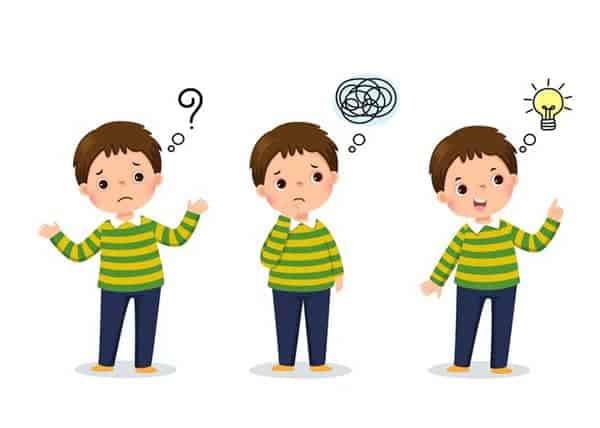
I imagine the future where my child sees a missed call on a phone and thinks with dread she now “has to” call me or she is an ungrateful daughter. I don’t want that. I would of course love it if she would call me, but only if that brings her joy. Guilt-tripping is so common in our society that feeling this kind of guilt is ingrained in our brains as something normal, even good and moral.
But it actually disconnects us, makes us more fake, more distant. So how is this even connected with putting on your shoes alone?
Well, independence is an important outcome of this period. Being shamed or ridiculed for doing things a certain way is harming that sense of independence and self-esteem it brings.
Psychologist Erik Erikson calls this stage locomotor and postulates that the main conflict of this age is initiative vs guilt. He says that a child in this stage is eager for responsibility. If the child is not given a chance to be responsible and do things on their own, a sense of guilt may develop. The child will come to believe that what they want to do is always wrong. So you may imagine that kind of child will grow into a person not being able to deal with “disobeying” or disappointing parents or even other authority figures.
So what to do to prevent this bleak scenario? Well, luckily not that much. When you start thinking “can my child handle this alone”, just give it the benefit of a doubt. Try it. With help at first, if needed, then little support, then alone.
We get so surprised all the time with the things our little one can do. We could so easily miss some of those opportunities for her to be independent. For example, we let her take her own snack. We fill her kitchen cabinet with things like nuts, some dried fruit, and crackers. She also has her plate, cup, and kitchen tools there. It’s up to her to get her own snack when she is hungry.
Of course, she can always ask for something else that I would assist her with. This is opportunity-based, not forced independence. It’s a joy to see how much she enjoys this. She carefully picks a few different things, puts them on the plate, brings them to the table, and eats them. After she is done, she puts the table in the sink. She owns the whole process. We had our doubts considering this, but it works beautifully.
Another thing we struggled with was sink access. She often has a need for water. Washing hands, painting, watering plants, or bathing animals, you name it. Yet we didn’t feel it’s safe for her to climb on the step to reach the sink. One day we decided to try. At first, we were going with her, but we quickly grew more confident. She can handle the tall step and it gave her so many opportunities to be independent.
Other things we do and are easy to try are taking care of dressing and undressing, personal hygiene, using scissors and small kitchen knives, other kitchen tasks, gardening…
The list is really big. Pick something your child is interested in and just give it a try. I think you’ll be surprised by how capable your child is.
No, I’m not big already
I am frequently annoyed by people commenting things like: Oh why are you crying, you are a big girl/boy! Or “Such a big boy/girl and still…( wearing diapers/using a pacifier/having some toy/being carried/basically anything). First, it’s judgemental, disrespecting someone’s needs and not their business at all. Second, why on Earth would you tell the child that they are big? Who really wants that? Less attention, less cuddling, less play?
Yes, our children want independence and respect, but not being big, especially if that means separation from the people they love the most. That’s why regression to “babyhood” is so common in this period.
It can come in many different forms, with sleep troubles, wanting help with things they know how to do, asking to be carried, talking like a baby, or having more potty accidents.
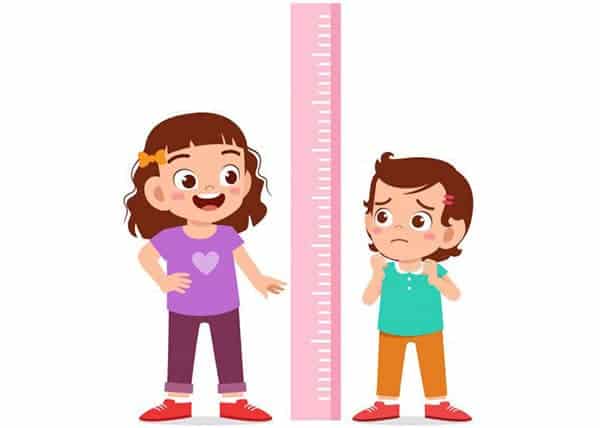
It is a normal and expected period, especially if there is some new stressor, like starting kindergarten or a new baby in a family. This is a way to keep things under control, to feel somebody will still take care of me.
Never shame or point out that your child “should” know how to do it. See this as a bid for connection and closeness. Use it as an opportunity to lavish extra love and affirmation. Help with anything they ask with “I love taking care of you!”. There are some games that can really help with that big demonstration of love.
Let your child run from you and you chase them proclaiming your love and saying how much you want them close. When you catch them say you will never let them and then despair as they run away again. Especially powerful if both parents are “fighting” over the child, who loves them more. I recommend the book Playful Parenting by Lawrence J. Cohen for more insights and ideas on connection-building games.
And there is always roleplay. Roleplay is probably the main theme of this period. Every idea, every new piece of information, every worry that your child has finds a way to sneak in roleplay scenarios.
This growing conflict between wanting to be more independent and still wanting to be cared for will show up in your child’s plays in so many different ways if you observe (or join). Sometimes they will be mama or dada nurturing their baby and repeating things you usually say (hilarious!). Sometimes they will be babies. Prepare things like bottles and diapers and just let them explore this.
Play is how the children process things, it’s exploration but also understanding and healing. Growing up is a scary thing and this conflict will repeat. But as long as we are accepting all of our children’s needs and emotions, they will resolve them and move on.
Ultralearning
Early childhood is the period of the most intensive learning in our lives. And yet that learning looks so effortless. There are no flashcards, no testing, no carefully prepared curriculum – and still, the learning is so obvious.
But there is something that is key to all learning and children do it masterfully – deliberate practice. Children do things over and over, especially challenging things – they struggle, and eventually they master it. They can certainly get frustrated, maybe even quit or ask for help, but tomorrow they will again be on it. And with all that trying and practicing, they learn huge amounts of things.
So as you may expect, there were big jumps in all areas of development. Gross motor skills are improving every day. Lots of children in this age group can run and jump well. They could also be working on climbing, throwing and catching the ball, and standing on one foot for a few seconds. Our girl is obsessed with monkey bars, nets, and everything related to balancing.
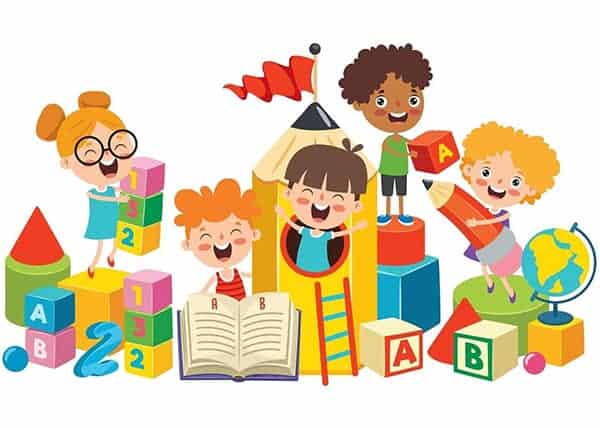
Fine motor skills are also improving rapidly. The pencil grip is getting better as well as cutting with the scissors. L. started to become really interested in all types of art. Watercolors, tempera, pencils, wax, and clay, cutting and gluing, any technique works for her. Our walls are covered in her artwork. And with all that output, her pictures are getting recognizable and pretty detailed.
Of course, roleplay and storytelling are still the main focus. She is spending most of her day in some intricate role, from robot to car mechanic, from princess to unicorn. And yes, side characters, or at least public, are required! Sometimes those stories continue over many days or even weeks.
Memory is definitely also getting better each day and she can remember lots of past events. You will notice that children remember events with lots of sensory details. Like “I was wearing this dress, and this music was on, and you were sitting on this chair…”. Amazing.
There is growing interest in so many things. Questions we hear every day are why is this, how would it be, how this works, what if, and…. Most frequently they go on our research list because we just don’t know. So many questions. It’s exhausting sometimes, but it gives you a new perspective. Learning is so much fun and it never really stops.
And with this, we will finish the article. It is on the long side already and we have barely scratched the surface. But nonetheless, we hope you find it useful for the time when your child passes the third year of age. Check out the next 6 months when our littles reach their fourth birthday. It certainly wasn’t any less dynamic or interesting. Happy parenting!
If you’re searching for some great STEM Activities for Kids and Child development tips, you’re in the right place! Check the Categories below to find the right activity for you.

STEM Science
Videos, guides and explanations about STEM Science in a step-by-step way with materials you probably already have at your home. Find new Science ideas.
Read more
STEM Technology
Videos, guides and explanations about STEM Technology in a step-by-step way with materials you probably already have at your home. Find new Technology ideas.
Read more
STEM Engineering
Videos, guides and explanations about STEM Engineering in a step-by-step way with materials you probably already have at your home. New Engineering ideas!
Read more
STEM Math
Videos, guides and explanations about STEM Math in a step-by-step way with materials you probably already have at your home. Find new Mathematics ideas.
Read more
Psychology
Find out all about development psychology topics that you always wanted to know. Here are articles from child psychology and development psychology overall.
Read more
First year of Child’s Life
Following a Child’s development every month from its birth. Personal experiences and tips on how to cope with challenges that you will face in parenting.
Read more
2 thoughts on “What to expect from a Three and a half years old Child?”